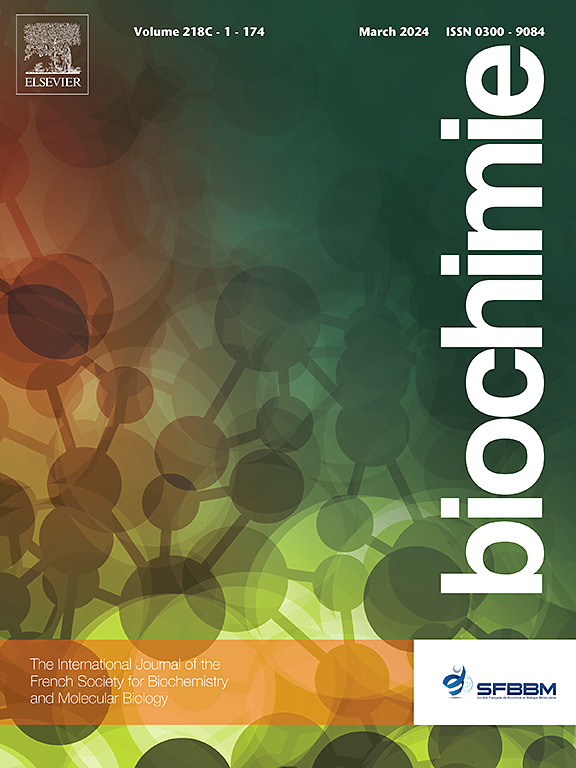南极酵母黏胶红酵母AN5对低浓度镉胁迫的生理和蛋白质组学综合分析
IF 3
3区 生物学
Q2 BIOCHEMISTRY & MOLECULAR BIOLOGY
引用次数: 0
摘要
在南极,海冰微生物主要受到低温、强紫外线辐射和高盐度等非生物环境胁迫,但日益严重的重金属污染可能对南极的影响更为严重。本文采用基于形态、生理和相对绝对定量等压标记(iTRAQ)的蛋白质组学分析方法,对分离自南极海冰的担子菌酵母Rhodotorula mucilaginosa AN5的重金属适应机制进行了解剖。形态学观察表明,酵母AN5可以通过增加细胞大小来部分缓解镉胁迫。KEGG功能富集和生理分析表明,海冰酵母的重金属耐受性可能与过氧化物酶体增殖物激活受体(PPAR)信号通路调控的不饱和脂肪酸生物合成密切相关,这在非动物领域尚属首次报道。此外,氧化还原平衡、物质代谢和能量生成也是酵母适应Cd胁迫的关键因素。总的来说,南极酵母主要通过形态改变、活性氧清除能力的提高和不饱和脂肪酸的生物合成来应对重金属。这项研究为南极海冰酵母对重金属胁迫的耐受机制提供了特别的见解。本文章由计算机程序翻译,如有差异,请以英文原文为准。

Integrated physiologic and proteomic analysis of Antarctic yeast Rhodotorula mucilaginosa AN5 in response to Cd stress at low concentration
In Antarctica, sea ice microorganisms are subjected to principal abiotic environmental stresses, such as low temperature, strong UV radiation and high salinity, but increasingly serious heavy metal pollution might has more grievous implication there. Herein, morphological, physiological and isobaric tag for relative and absolute quantification (iTRAQ)-based proteomic analyses were performed to anatomize the heavy metal adaptation mechanism of Rhodotorula mucilaginosa AN5, a type of basidiomycetous yeast strain isolated from Antarctic sea ice. Morphological observation showed that yeast AN5 could partly alleviate cadmium stress by the increase of cell size. KEGG functional enrichment along with physiological analysis showed that heavy metal tolerance of sea ice yeast might prominently be related to unsaturated fatty acids biosynthesis regulated by peroxisome proliferators-activated receptor (PPAR) signaling pathway, which is the first report in non-animal field. In addition, redox equilibrium, substances metabolism and energy generation also played key roles for yeast acclimation upon Cd stress. In general, Antarctic yeast could cope with heavy metal mainly by morphological alteration, ROS-scavenging capacity improvement and unsaturated fatty acids biosynthesis. This research provided particular insight into the tolerance mechanisms of Antarctic sea ice yeast in response to heavy metal stress.
求助全文
通过发布文献求助,成功后即可免费获取论文全文。
去求助
来源期刊

Biochimie
生物-生化与分子生物学
CiteScore
7.20
自引率
2.60%
发文量
219
审稿时长
40 days
期刊介绍:
Biochimie publishes original research articles, short communications, review articles, graphical reviews, mini-reviews, and hypotheses in the broad areas of biology, including biochemistry, enzymology, molecular and cell biology, metabolic regulation, genetics, immunology, microbiology, structural biology, genomics, proteomics, and molecular mechanisms of disease. Biochimie publishes exclusively in English.
Articles are subject to peer review, and must satisfy the requirements of originality, high scientific integrity and general interest to a broad range of readers. Submissions that are judged to be of sound scientific and technical quality but do not fully satisfy the requirements for publication in Biochimie may benefit from a transfer service to a more suitable journal within the same subject area.
 求助内容:
求助内容: 应助结果提醒方式:
应助结果提醒方式:


